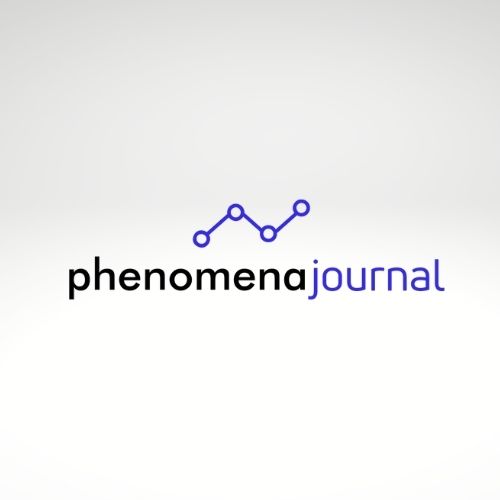
Pubblicato 22.10.2021
Parole chiave
- psychoanalisis,
- symbol
Come citare
Abstract
L’interesse ad approfondire l’approccio psicodinamico per la comprensione e il trattamento dell’autismo nasce, in particolare, dallo studio del contributo psicoanalitico relativo alle psicosi infantili, ad opera di Melanie Klein . Ancor prima della definizione di una specifica sindrome patologica, nel 1943, a opera di Leo Kanner che, per primo, parlò di “autismo infantile precoce”, la psicoanalista ungherese descrive negli anni Trenta del XX secolo, un caso che lei chiama di psicosi infantile e che oggi verrebbe diagnosticato come autismo. Ancora oggi le intuizioni e le metodologie terapeutiche illustrate nel suo celebre articolo “The importance of Symbol-Formation in the Development of the Ego”, in cui illustra il caso del piccolo Dick, risultano essere preziose per la comprensione e il trattamento dei pazienti autistici. E’, dunque, a Melanie Klein che siamo debitori per la più illuminante e pionieristica descrizione dell’autismo. Il suo pensiero ha, pertanto suscitato notevole interesse da parte di molti psicoanalisti tra cui Donald Meltzer, Wilfred Bion e la psicoterapeuta inglese Frances Tustin, il cui contributo costituisce ancora oggi il più importante riferimento psicoanalitico nel campo della ricerca e della clinica dell’autismo.
Il merito del pensiero psicoanalitico è quello di aver prodotto un modello psicopatologico dell’autismo ancor prima degli illuminanti contributi scientifici che hanno attestato la presenza di alterazioni neurobiologiche come sua eziopatogenesi. Alla luce di tali scoperte l’ipotesi originaria, che tale funzionamento mentale fosse frutto di un arresto evolutivo, è stata completamente rivista e attualmente, nella letteratura psicoanalitica, si ritiene che esso sia l'espressione di una distorsione dello sviluppo psichico. E’ doveroso sottolineare che, anche se tale modello psicopatologico nulla ci dice circa le alterazioni biologiche ad esso sottese, ha comunque il merito di aver compreso, più di ogni altro approccio, il funzionamento neuromentale dei soggetti autistici, con le sue peculiarità e diversità e, soprattutto, di aver fondato un modello di trattamento terapeutico estremamente valido, ancora oggi. Sebbene l’OMS consideri la terapia cognitivo-comportamentale e l’approccio ABA come trattamento d’élite per l’autismo, è interessante analizzare i contributi psicodinamici alla luce delle recenti scoperte scientifiche per indagare quali potrebbero essere gli elementi di tale modello maggiormente utili al trattamento dei disturbi dello spettro autistico.
Parole chiave : autismo, psicoanalisi, trattamento,
Riferimenti bibliografici
- Kanner, L. (1943). Autistic Disturbances of affective contact. Baltimora: Nervous Child.
- Klein, M. (1930). The Importance of Symbol-Formation in the Development of the Ego. The International Journal of Psychoanalysis, 11, 24–39.
- Bettelheim, B. (1967). The Empty Fortress: Infantile Autism and the Birth of the Self. New York: Free Press.
- Mahler, M. - Pine, F. - Bergman, A. (1975). The Psychological Birth of the Human Infant Symbiosis and Individuation. New York: Basic Books.
- Mahler, M. (1968). Infantile Psychosis. New York: International Universities Press.
- Bick, E. (1964). Note sull'osservazione del lattante nell'addestramento psicoanalitico, L’Osservazione diretta del bambino. Torino: Bollati Boringhieri.
- Bick, E. (1968). The experience of the skin in early object-relations. Int. Psycho-anal, vol. 49.
- Tustin, F. (1972). Autism and Childhood Psychosis. Londra: Hogart Press.
- Winnicott, D. W. (1989). La paura del crollo in Esplorazioni Psicoanalitiche. Milano: Raffaello Cortina.
- Tustin, F. (1983). Stati autistici nei bambini. Roma: Armando.
- Meltzer, D. - Bremner, J. - Hoxter, S. - Weddel, D. - Wittenberg, I. (1975). Esplorazioni sull’autismo: studio psicoanalitico. Torino: Boringhieri.
- Meltzer, D. - Williams, H. (1988). The Apprehension of Beauty. Pertshire.
- SIGN 145, Assessment, diagnosis and interventions for autism spectrum disorders, 2016.
- Alvarez A. (2010). Levels of analytic work and levels of pathology: the work of calibration. Int J Psychoanal. Aug;91(4):859-78.
- Bruner, J. (1968). Studi sullo sviluppo cognitivo. Roma: Armando.
- Alvarez A. (2014). Un cuore che pensa. Astrolabio.
- Houzel, D. (2004). The psychoanalysis of infantile autism. Journal of Child Psychotherapy, 30(2), 225-237.
- Laznik, M. C. (2016). Lacan e l’autismo. Rivista di Psicoanalisi, LXII, 3.
- Laznik, M. C. (2012). Con voce di sirena. Storie di bimbi autistici, di bimbi troppo sensibili e dei loro genitori. Editori Internazionali Riuniti.
- Olliac, B., Crespin, G., Laznik, M. C., Cherif Idrissi El Ganouni, O., Sarradet, J. L., Bauby, C., ... & Saint-Georges, C. (2017). Infant and dyadic assessment in early community-based screening for autism spectrum disorder with the PREAUT grid. PLoS One, 12(12), e0188831.
